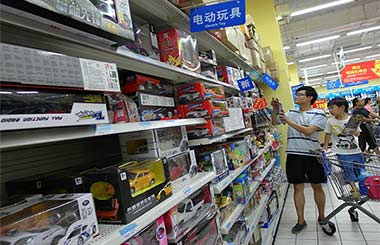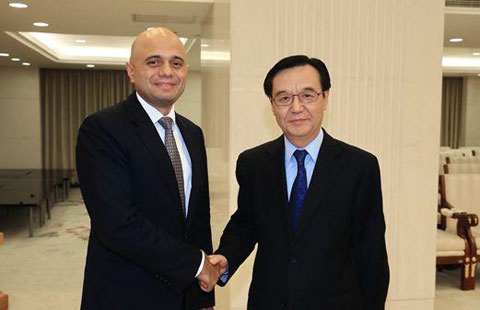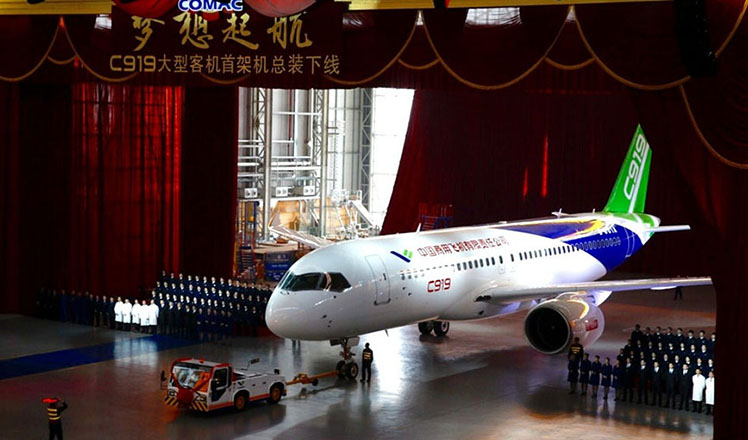China emerges as player in chemical M&A: report
Updated: 2016-03-11 09:29
By PAUL WELITZKIN in New York(chinadaily.com.cn)
|
|||||||||
Faced with a maturing domestic market that will likely grow at a more measured pace, China's chemical companies could continue to be major participants in the industry's global merger-and-acquisition (M&A) scene, according to a new report from A.T. Kearney.
While North America is the largest market for chemical M&A activity, China is a close second, Kearney, a business management consultancy, said in a report released on Tuesday.
"Over the last 10 to 15 years, China has evolved into a major M&A player," Linus Hildebrandt, a Kearney principal for Asia Pacific, told China Daily. "Chinese companies will be on the hunt for targets with world-class technology in mature markets like Europe."
The Kearney report said that China has become one of the top acquiring countries, growing from 4 percent of volume in 2002 to 21 percent in 2015, just behind the US, with 22 percent. South Korea's share grew from 2 percent to 6 percent in the same period.
Two recent deals symbolize the Chinese ascent on the chemical takeover stage, according to Hildebrandt. In 2015, China National Chemical Corp (or ChemChina) agreed to buy into Italy's Pirelli SpA in a $7.7 billion acquisition.
The purchase will give ChemChina's tire-making division, China National Tire & Rubber, Pirelli's premium-tire technology and more access to the huge Chinese market for the Italian brand.
Last month, China National Chemical unveiled a nearly $43 billion offer for Swiss seed and pesticide company Syngenta AG to help transform it into a leading supplier of agrochemicals and pesticides.
Up until these purchases, Chinese acquisitions had been on the small- or mid-size level, Hildebrandt said. A few weeks before the Syngenta deal, ChemChina bought German industrial machinery maker KraussMaffei Group for about $1 billion.
Hildebrandt said the Chinese companies have developed a model for overseas acquisitions that will likely be used to integrate Pirelli and Syngenta.
"China generally keeps the existing management and allows the companies to operate independently," he said. "They are building upon their experience with smaller targets. It's not so much a takeover but more of a portfolio approach to management."
Kearney's fifth annual Chemicals Executive M&A Report noted that global chemical M&A deal values rose by 30 percent last year to $110 billion, and is predicting an all-time record spike in 2016.
With two mega-deals already announced — Dow Chemical Co and E.I. DuPont de Nemours & Co's $130 million merger and ChemChina's bid for Syngenta — and potential large new transactions generated by emerging-market players, total chemical M&A values for 2016 could double last year's level, Kearney said.
Hildebrandt cited several factors for the rising level of chemical M&A: limited organic growth options, favorable feedstock prices, lower oil prices and portfolio optimization.
"Chinese chemical companies have limited growth opportunities domestically as the Chinese economy grows at rates below previous levels," he said. "This means Chinese companies will need to look outside of China. It's always cheaper to expand through acquisitions than it is by building a business."
Despite the size of the Syngenta deal, Hildebrandt expect Chinese companies to remain active M&A participants the rest of the year.
Samuel Feinstein, a partner at Apollo, an alternative investment manager controlling $162 billion of assets including chemical companies, told Kearney he expects to see a significant amount of corporate strategic transactions this year.
"The recently announced Dow-DuPont merger is clearly a sign of that. I also expect a meaningful number of non-core asset divestitures, like carve-out transactions. Carve-out transactions require a particular skill set to work through the inevitable challenges of carving an independent business out of another."
paulwelitzkin@chinadailyusa.com
Related Stories
Environmental fears see Guizhou chemical project turned down 2016-03-02 21:52
A sustainable role for the chemical sector 2016-02-20 09:17
China National Chemical Corp acquires Syngenta AG 2016-02-03 15:44
Dow Chemical named best innovator in China 2016-01-21 20:06
583 chemical works closed, relocated, corrected in Tianjin blast site 2016-01-18 14:03
Today's Top News
Experts confident in growth objective
Clinton, Sanders spar over immigration
Scholar praises pragmatic government work report
China hits back at US over ZTE restrictions
Longer visas for foreign experts eyed to ease entry
China scholar praises pragmatic govt work report
Female condom made in China wins WHO approval
China hits back at US over restrictions on ZTE
Hot Topics
Lunar probe , China growth forecasts, Emission rules get tougher, China seen through 'colored lens', International board,
Editor's Picks

|

|

|

|

|

|






